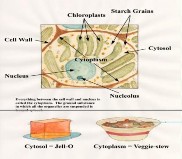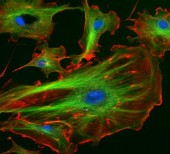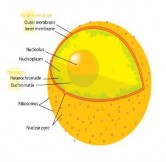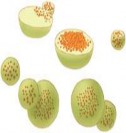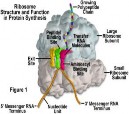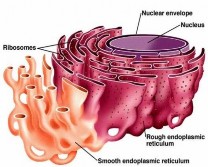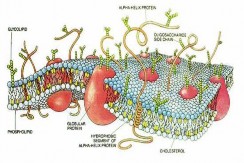chuyên ngành Dịch Vụ Thú Y và Chăn Nuôi Thú Y để tự trao dồi thêm kiến thức và kỹ năng. Trung thực trong kiểm tra và thi.
Nội dung môn học:
Tên chương, mục | Thời gian (giờ) | ||||
Tổng số | Lý thuyết | Thực hành, thí nghiệm, thảo luận, bài tập | Kiểm tra | ||
1 | Chương 1: THE BIOLOGY OF THE CELL | 4 | 4 | 0 | |
2 | Chương 2: ANIMAL BODY & THE BODY STRUCTURE Unit 1: ANIMAL BODY Unit 2: THE BODY STRUCTURE | 5 | 5 | 0 | |
3 | Chương 3: INFLAMM-ATION | 3 | 3 | 0 | |
Kiểm tra | 1 | 1 | |||
4 | Chương 4: MAJOR DISEASES OF FARM ANIMALS | 3 | 3 | 0 | |
5 | Chương 5: CLASSICAL SWINE FEVER (HOG CHOLERA) | 5 | 5 | 0 | |
6 | Chương 6: COMMON SIGNS IN SICK ANIMALS SUPPLEMENTARY READING – AVIAN INFLUENZA ( FOWL PLAGUE) | 3 | 3 | 0 | |
7 | Chương 7 : DRUGS & DIRECTIONS FOR USE SHEET | 5 | 5 | 0 | |
Thi/kiểm tra kết thúc môn học | 1 | 1 | |||
Cộng | 30 | 28 | 0 | 2 | |
Có thể bạn quan tâm!
-
 Giáo trình Anh văn chuyên ngành dùng chung Nghề Dịch vụ thú y và chăn nuôi - Cao đẳng - Trường Cao đẳng Cộng đồng Đồng Tháp - 1
Giáo trình Anh văn chuyên ngành dùng chung Nghề Dịch vụ thú y và chăn nuôi - Cao đẳng - Trường Cao đẳng Cộng đồng Đồng Tháp - 1 -
 Vocabulary: Translate The Following Words Into Vietnamese And Learn By Heart Them.
Vocabulary: Translate The Following Words Into Vietnamese And Learn By Heart Them. -
 Reading: Read The Following Text And Do The Exercises That Follow.
Reading: Read The Following Text And Do The Exercises That Follow. -
 Reading: Read The Following Words And Do The Exercise That Follow.
Reading: Read The Following Words And Do The Exercise That Follow.
Xem toàn bộ 75 trang tài liệu này.
Chapter 1
THE BIOLOGY OF THE CELL MH38 - 01
In this Chapter
Objectives:
By the end of the Chapter, learners are able to
Give the definition of the cell.
Study the organelles of the cell.
1. Vocabulary: Translate the following words into Vietnamese and learn by heart them.
Cell (n) :
Biology (n) :
Prokaryote (n) :
Eukaryote (n) : Cyanobacteria (n) = blue_green algae (n): Protozoa (pl); protozoan = protozoon (n): Plasma membrane (n) :
Bi-Layer (n) :
Nucleus (n) :
Primitive (adj) :
Chromosome (n) : Nucleolus = nucleoli (n) : Endoplasmic reticulum (n): Rough (adj) :
Smooth (adj) :
Ribosome (n) :
Amino Acid (n) : Synthesis (n); syntheses (pl) :
Golgi apparatus (n) = golgi body = golgi complex: Sac (n) :
Edge (n) :
Secretory vesicle (n) :
Lysosome (n) :
Enzyme (n) :
Peroxisome (n) : Mitochondria (pl) = mitochondrion (n): Centriole (n) :
Cylinder (n) :
Cytoplasm (n) :
Substance (n) :
Microscopic (adj) :
Cytoskeleton (n) :
Skeleton (n) :
Microtubule (n) :
Microfilament (n) : Intermediate Filament (n) :
2. Reading: Read the following text and do the exercises that follow.
THE BIOLOGY OF THE CELL
All organisms are made up of cells. The cell is one of the most basic concepts in biology. Organisms can be made from only one cell or many cells. No matter how complex a tissue, organ, or organism may become, the basic unit to all living things is the cell, and that's why it's important to study it.
Organisms are classified in two ways. They are either prokaryotes or eukaryotes. The main differences between prokaryotes and eukaryotes are shown in the following checklist:
ProkaryotesEukaryotes
no true nucleus have a nucleus
cell organelles absent have internal organelles
Fig.1.1 Eukaryote and Prokaryote
The prokaryotes are mainly bacteria and the cyanobacteria (also called the blue-green algae). The eukaryotes are represented by the protozoa, fungi, plants, and animals. There are a few things that both prokaryotes and eukaryotes have in common. Both have cytoplasm and plasma membrane.
Let's look now at the different parts of the cell and each of the different functions as they correspond to those parts. Please refer back to the diagram for help and remember that this diagram is an "ideal" eukaryotic animal cell and all cells do not look exactly like this.
2.1. Plasma Membrane
The plasma membrane (also called the cell membrane) forms the outer limits of the cell. As with other membranes, the plasma membrane is made up of
proteins and lipids, especially phospholipids. These lipids occur in two layers, often called the bi-layer. The bi-layer has globular proteins that seem to float in the lipid layer. This type of structure is in continual motion, giving it a fluid appearance. This appearance is often called the fluid mosaic structure. The proteins in this lipid layer are very important because they carry out many of the activities that the plasma membrane performs. The plasma membrane uses this fluid mosaic structure to control the environment of the cell. We'll talk about the functions of the membrane later.
2.2. Nucleus
Prokaryotic cells lack a nucleus (prokaryote literally means "primitive nucleus"), but eukaryotic (eukaryote literally means "true nucleus") cells have a distinct nucleus. The nucleus is mainly made up of DNA (DNA=Deoxyribonucleic Acid) in the form of linear units called chromosomes. If observed under a microscope, the chromosomes appear in their linear units at the time of mitosis, or cell division (we will talk about that in another lesson). When the DNA is not found in linear units it is known as chromatin. The nucleus in eukaryotic cells is surrounded by the nuclear envelope. This envelope is a double membrane that is similar to the plasma membrane and consists of lipid layers. The pores in the nuclear membrane allow the nucleus to communicate with the cytoplasm and direct the activities of the cell.
2.3. Nucleolus
The nucleolus is a dense organelle within the nucleus where organelles called ribosomes are formed before leaving the nucleus into the cytoplasm.
2.4. Endoplasmic Reticulum
The endoplasmic reticulum (commonly referred to as ER) is a series of membranes that is continuous with the nuclear membrane and can extend throughout the cytoplasm. There are two different types of ER. In some places the ER has tiny bodies known as ribosomes attached to it, when this occurs we call it rough ER. When the ER has no ribosomes attached,it is called smooth ER.
2.5. Ribosome
The ribosomes are organelles where amino acids are bound together. Commonly called the site of protein synthesis within the cell.
2.6. Golgi apparatus
The Golgi apparatus (or Golgi body, as it is sometimes called) is a series of sacs that appear to be flattened and curled at the edges. The proteins and lipids of the cell are processed and "packaged" in the Golgi apparatus. In order to "send" these proteins and lipids to there correct addresses, the outside-edge sacs frequently bulge and break away and form drop-like sacs that are called
secretory vesicles. In the diagram you can see some of these vesicles as they have broken away from the golgi apparatus.
2.7. Lysosome
The lysosome comes from the Golgi apparatus. The lysosome is also a drop-like sac full of enzymes that move about in the cytoplasm. The enzymes contained in the lysosome are used by the cell for digestion. They break down particles of food taken in and make the end products available for use by the cell.
2.8. Peroxisome
The peroxisome is also a small sac that contains enzymes.
2.9. Mitochondria
The word mitochondria are the plural form of the organelle mitochondrion. This organelle is commonly known as the "powerhouse of the cell" because it is the place where energy is stored and released. The energy released by the mitochondria is used to form ATP. We will talk more about the mitochondria later.(ATP= Adenosine Triphosphate : Adenosin Triphophat)
2.10. Centriole
The centriole is a cylinder-like organelle that occurs in pairs and its main function is cell division.
2.11. Cytoplasm
The cytoplasm (or cytosol as it is sometimes called) is a gel-like substance that is contained by the plasma membrane (sort of like jelly being contained by a bowl. Inside the cytoplasm are tiny microscopic organelles (literally called "little organs") which carry out specific functions of the cell (much like the different organs in our bodies that carry out specific duties, like the stomach, the heart or the lungs).
2.12. Cytoskeleton
The cytoskeleton is an organelle that provides the structure for a cell. Just like our bodies have a skeleton make of bone, material to provide us with support and form, the cell has the same type of system. The cytoskeleton is made of microtubules, microfilaments, and intermediate filaments-all composed of proteins.
Exercise 1: Are these sentences True or False ?
1. Prokaryotes or eukaryotes are organisms.
2. The cell membrane is made up of proteins, lipids and phospholipids.
3. The literal meaning of prokaryote is “true nucleus” and the literal meaning of eukaryote is “primitive nucleus”.
4. Rough ER and smooth ER are two different types of the endoplasmic reticulum.
5. The Golgi apparatus is always called Golgi body.
6. The organelle mitochondrion is known as the “powerhouse of the cell”.
7. The main function of the centriole is cell division.
8. The cytoplasm is large microscopic organelles which carry out specific functions of the cell.
9. The cytoskeleton is made of microtubules, microfilaments, and intermediate filaments.
10. The proteins in this lipid layer are unimportant because they carry out many of the activities that the plasma membrane performs.
Exercise 2: Work in groups. Translate the text about The Biology of The Cell into Vietnamese.
3. Further Practice
Exercise: Label the items using the words in the box.
Cytoskeleton
Golgi Apparatus
Plasma Membrane
Lysosome
Ribosome
Peroxisome
Nucleus
Mitochondria Centriole
Cytoplasm Endoplasmic Reticulum
